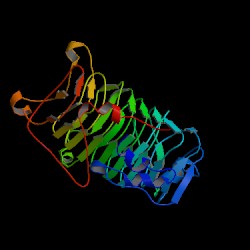The protein components of the things that we commonly recognize as causes of allergies are referred to as allergens. These allergens are some of the building blocks of pollens, mold spores, and dust mites that we recognize as triggers for hay fever in humans and allergic dermatitis in dogs and cats. Among the hundreds or thousands of proteins that can be identified in a particular pollen, only certain ones have been identified as triggering allergies. These protein allergens are often found in two closely related, but distinct plants. As basic cellular machinery, some of these protein allergens are found in plants that aren’t not so obviously related, for example apple and birch.
Desensitizing pets to their allergen triggers is the goal of RESPIT®. The conservation of some protein allergens across different plant species creates cross-reactivity for certain pairs of pollen allergens that are used for immunotherapy. In human and veterinary medicine, this cross-reactivity is used to our advantage when formulating extract treatments. By including a pollen that shares allergens with another, we can desensitize to both.
The degree of cross-reactivity between allergens varies. Many types of grasses are largely cross-reactive. These include Timothy, fescue, rye and Kentucky blue grass, among others. Bermuda and Bahia grasses cross react within their families, but not with the northern pasture grasses.
Different species of ragweed are largely cross-reactive and may also cross react with sagebrush and cocklebur. Some weeds, like English plantain have unique allergens.
Amongst the trees, cedar and juniper are cross-reactive, as are oak and chestnut, hickory and walnut, and pine and spruce.
As we learn more about the molecular basis of allergen immunotherapy, we may be able to design more targeted mixtures to help pets with their itch.

